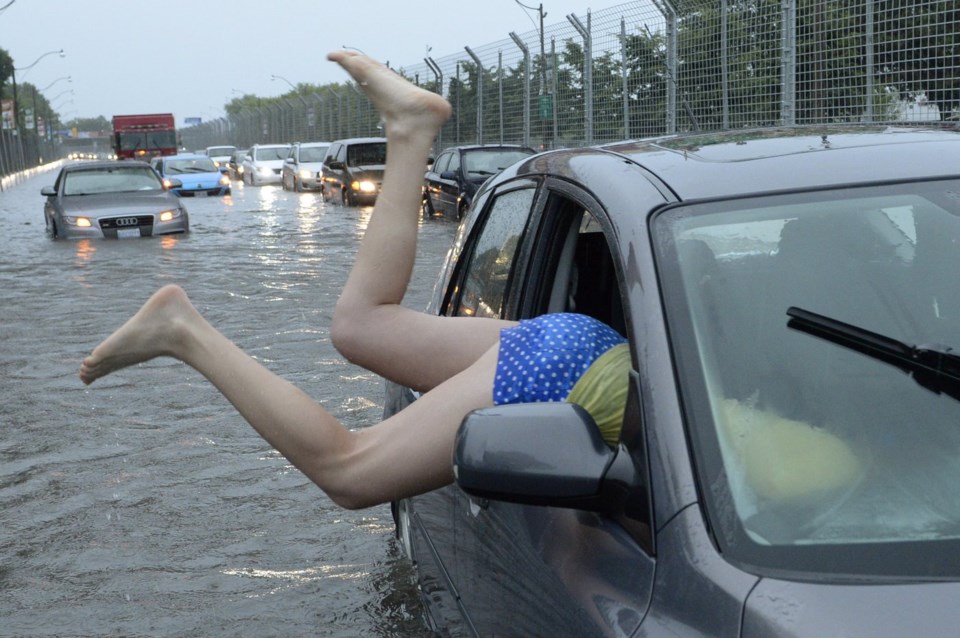A torrential downpour that flooded parts of Toronto and its surrounding areas on Tuesday brought back memories of flash flooding that paralyzed Canada's largest city more than a decade ago.
An intense thunderstorm dumped record-breaking amounts of rain on Toronto over just a few hours on July 8, 2013, causing chaos on the streets.
Stretches of highways and roads were flooded, forcing some drivers to abandon their vehicles.
An evening rush-hour GO train became stranded in floodwater en route to Richmond Hill, Ont., forcing rescue crews to use inflatable boats to ferry all 1,400 passengers to higher ground. The rescue operation took hours, as the water level inside the train kept rising.
All of Toronto's subway service was temporarily halted due to power and signal issues and a number of stations were flooded – along with homes and buildings in low-lying areas.
Meanwhile, hundreds of thousands of people across the Greater Toronto Area were without power for hours, and some into the next day. Mississauga, Ont., saw some of the worst of the blackouts with 80 per cent of the community plunged into the dark at one point.
Environment Canada said at the time that some parts of the GTA had been drenched with more than 100 millimetres of rain, beating the monthly average for July.
The 2013 Toronto flood has been listed among the 10 most expensive natural disasters in Canada, as measured by insurance payouts. The cost has been pegged at $1 billion, according to data from the Insurance Bureau of Canada and adjusted for inflation in 2021.
This report by The Canadian Press was first published July 16, 2023.
The Canadian Press




